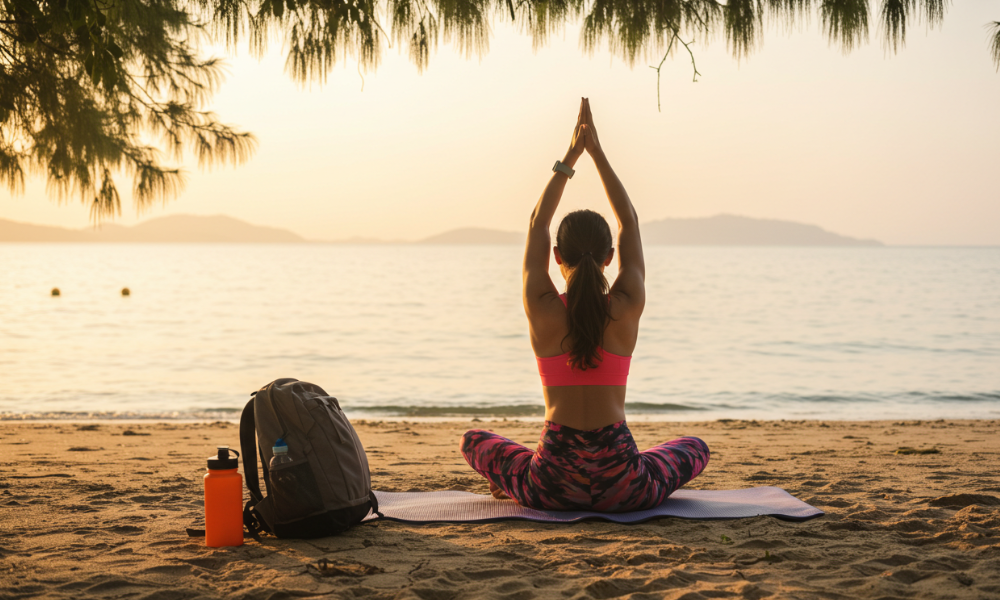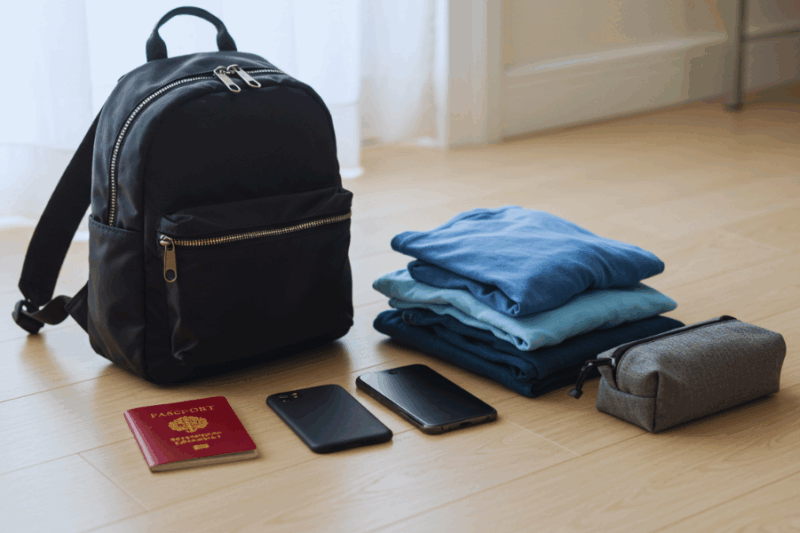Long-term travel offers incredible experiences but can disrupt fitness routines due to changing schedules, limited equipment, and tempting local cuisines. Staying fit on the road is not only achievable but can enhance your energy, mood, and overall travel experience. Here are practical strategies to maintain physical health while exploring the world in 2025, tailored for flexibility and minimal resources.

Prioritize Consistency Over Intensity
Long-term travel demands adaptability, so focus on sustainable habits rather than intense workouts. Aim for 20-30 minutes of movement most days, adjusting based on your schedule. Consistency builds momentum, even with simple exercises. Use a habit-tracking app like Habitica to stay accountable across time zones.
Incorporate Bodyweight Workouts
No gym? No problem. Bodyweight exercises require no equipment and can be done anywhere—hostel rooms, parks, or beaches. Create a circuit of:
- Push-ups: For chest and arms (modify on knees if needed).
- Squats or Lunges: For legs and glutes.
- Planks: For core strength (hold 20-60 seconds).
- Jumping Jacks: For cardio. Aim for 3 sets of 10-15 reps each, 3-4 times weekly. Apps like Nike Training Club offer free guided workouts tailored to small spaces. Adjust intensity based on energy levels after long travel days.
Leverage Local Activities
Turn sightseeing into exercise by embracing active exploration:
- Walking Tours: Explore cities on foot instead of taking buses or taxis. A 2-hour walking tour can burn 200-300 calories.
- Hiking: Seek trails in destinations like Chiang Mai, Thailand, or Cappadocia, Turkey. Use AllTrails to find beginner-friendly routes.
- Cycling: Rent bikes in bike-friendly cities like Amsterdam or Hanoi (often $2-5/day). It’s a fun, low-cost way to stay active.
- Swimming or Surfing: Coastal areas like Bali or Costa Rica offer affordable water sports. Even a 30-minute swim boosts cardio and muscle tone.
Stay Active on Travel Days
Long flights, bus rides, or train journeys can leave you stiff. Combat this with micro-movements:
- Airport Workouts: Walk laps in terminals or do stretches during layovers. Some airports, like Singapore’s Changi, have yoga zones.
- Seated Exercises: On planes or buses, do ankle rolls, shoulder shrugs, or seated leg lifts every hour to improve circulation.
- Luggage Lifts: Use your backpack as a weight for squats or overhead presses while waiting at stations.
Eat Mindfully
Travel tempts with rich foods, but balance is key:
- Choose Local, Fresh Options: Opt for street food like grilled skewers or vegetable-based dishes (e.g., Vietnamese gỏi cuốn or Greek salads) over heavy tourist menus.
- Portion Control: Share dishes or save leftovers when possible. In Southeast Asia, small portions at markets cost $1-3 and are often healthier.
- Snack Smart: Carry nuts, fruit, or protein bars for quick, nutritious snacks. Avoid sugary drinks; stick to water or unsweetened teas.
- Cook When Possible: Stay in hostels or Airbnbs with kitchens to prepare simple meals like salads or stir-fries. Shop at local markets for affordable ingredients.
Stay Hydrated
Dehydration can sap energy and mimic hunger, derailing fitness goals. Carry a reusable water bottle and aim for 2-3 liters daily, more in hot climates. In destinations with unsafe tap water (e.g., parts of Southeast Asia), use filtered water stations or budget-friendly bottled water. Add electrolytes like oral rehydration salts in tropical regions to maintain energy for workouts.
Prioritize Sleep
Sleep is critical for recovery and fitness. Travel disruptions like jet lag or late-night adventures can interfere, so:
- Stick to a Schedule: Aim for 7-8 hours of sleep, adjusting gradually to new time zones. Use earplugs or an eye mask in noisy hostels.
- Nap Strategically: A 20-minute nap can recharge you for evening activities or workouts, especially after long travel days.
- Wind Down: Avoid screens 30 minutes before bed. Try journaling or meditation to relax, using apps like Calm.
Use Technology for Guidance
Apps and wearables can keep you motivated:
- Fitness Apps: Strava tracks runs or walks, while Yoga for Beginners offers equipment-free sessions.
- Wearables: A budget fitness tracker (e.g., Xiaomi Mi Band) monitors steps and sleep without breaking the bank.
- Online Communities: Join fitness groups on platforms like Reddit’s r/bodyweightfitness for tips and accountability.
Adapt to Your Environment
Each destination offers unique opportunities:
- Urban Areas: Use city parks for workouts or join free community runs (check Parkrun for global events).
- Rural Areas: Hike, swim, or do yoga in natural settings. Many hostels in places like Pai, Thailand, offer free yoga classes.
- Cold Climates: Layer up for outdoor runs or do indoor circuits in your room. In cities like Budapest, thermal baths double as relaxation and light exercise.
Mental Fitness Matters
Travel can be mentally taxing, impacting physical motivation. Incorporate mindfulness to stay balanced:
- Morning Stretch or Meditation: A 5-minute yoga flow or breathing exercise boosts mood. Try Headspace’s travel-specific meditations.
- Gratitude Journaling: Write down one positive experience daily to maintain a positive mindset, which supports fitness commitment.
- Rest Days: Schedule 1-2 rest days weekly to avoid burnout. Use them for light walks or cultural exploration.
Sample Weekly Fitness Plan
- Monday: 20-minute bodyweight circuit (push-ups, squats, planks) + 30-minute city walk.
- Tuesday: 15-minute yoga + swim or bike rental.
- Wednesday: Rest day (light stretching, explore a museum).
- Thursday: 20-minute HIIT workout (via YouTube) + hike or walking tour.
- Friday: 30-minute run or brisk walk + local activity (e.g., kayaking).
- Saturday: Bodyweight circuit + market meal prep.
- Sunday: Rest day or light swim/yoga.
Budget-Friendly Tips
- Free Resources: Use YouTube for workouts or free fitness challenges online.
- Shared Spaces: Hostels often have communal areas for exercise or group classes at low cost.
- Multi-Use Gear: Pack a resistance band or jump rope for versatile, lightweight workouts.
Why Stay Fit While Traveling?
Maintaining fitness enhances stamina for long travel days, boosts confidence, and helps you fully enjoy activities like hiking or exploring. It also balances indulgences in local cuisines, keeping you energized. In 2025, with wellness tourism on the rise, many destinations offer budget-friendly fitness options like yoga retreats or community runs.
Final Thoughts
Staying fit while traveling long-term is about flexibility and creativity. Integrate movement into your adventures, eat mindfully, and use free resources to maintain health without sacrificing fun. Whether you’re hiking in Laos or strolling through Lisbon, these habits will keep you strong, energized, and ready to embrace the journey.



